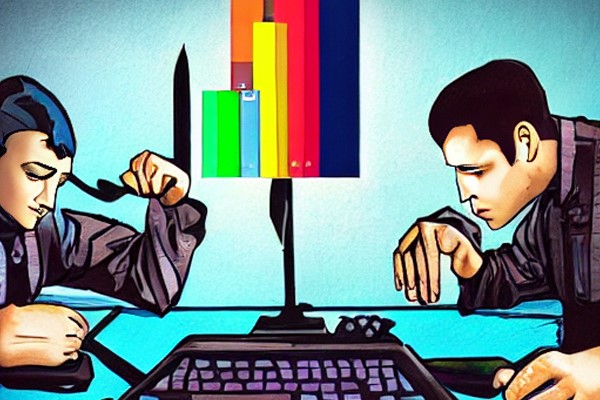The field of AI-generated content has been growing since 2020. I personally never paid much attention until recently as more and more headlines are hitting the news and people I know are creating AI art. While there is some great content being produced, it has led me to ask many questions.

Illustration generated by Stable Diffusion using the prompt: problems for the present, ethical dilemma, conceptual art, faces, colorful
Ethics of AI-Generated Content
What are the ethics and legal implications of AI-generated art? Who created it? Who owns it? How does it affect artists that are currently paid to create content? How does it affect businesses that would have paid a person to create something, but could instead now use AI?
How are these tools able to create their images? They were trained with millions of images from across the internet. Many artists claim their images were used without permission. We’ve learned that once something is on the internet, it is available for anyone to use or misuse. Once someone reshares the image (or is reshared again), it can be hard to track everywhere your image is used without your consent. And what if someone saves a copy locally? How is that different than referencing your work to create a derivative work that falls under fair use? How is that different than being inspired by someone’s work to create a wholly new work in the style of someone else? What is the line between inspiration and copyright infringement?
Jason Allen recently won first place in the Colorado State Fair in the digital art category. Many people say that he should not have been allowed to enter AI-generated art. Jason comments that he spent over 80 hours and 900 attempts to create the final piece and used Photoshop to touch up the image. Just because the tool exists that generated the image, is his work, time, effort, and skill any less valuable? How different is his process from other artists that only used Photoshop to create their work? His work was still created “digitally”.
But who gets credit for creating the art? The creators of the algorithm? The computer that runs the program and outputs the result? The images used to train the AI tool? The person that wrote the prompt and selected the image they wanted? Do the other artists in the digital art category credit their images to Adobe/Photoshop or any other tools used to create their images?
Since AI can create an image, do we say that the AI is “creative”? Are they creative in the same way a person can be creative? Do you reference one of these services as if it were an artist? Does Midjourney get an exhibit at The Met or The Louvre? How do these tools change our perception of art?
A new type of art
The current AI tools use a text prompt to generate an image. This has spawned an entirely new form of art called “prompt writing”. Using words and descriptions to get the AI to give you the image you want. Which of course has been turned into a thing to sell. Who gets credit for the generated image? Is it the person that created the prompt? Is it the person that picked the image they wanted as a result of that prompt?
Each tool produces different results with the same prompt. How do you use these differences to your advantage as an artist to create the image you want?
Innovation
As with any new technology, it becomes the basis for others to innovate. People are creating ways to turn basic images or motion into art; integrating AI generation tools into Photoshop to outfill parts of your digital art; using text prompt to create a color pallet. This is just the beginning!
Conclusion
I’m not against this technology. What it can produce can be visually stunning. I’m just not sure yet if I feel like it is valuable technology. I do find the process of creating the algorithms that generate the output to be mind boggling and fascinating. I think the ability to turn words into art is another form of art in itself. I believe there will be many debates, bad actors, ethical dilemmas and legal battles over the next several years. But this technology is not going to disappear. Brandon Luhring shows that this is not the first time a new medium has disrupted art or entertainment, instead it changes how we perceive things.
If you’re interested in how the future of AI generation tools could affect your business, reach out to your Perficient account manager, or use our contact page to begin a conversation.
This blog post is part of a series of articles about recently launched artificial intelligence (AI) generation tools (2020-2022). Don’t miss the full series: |

